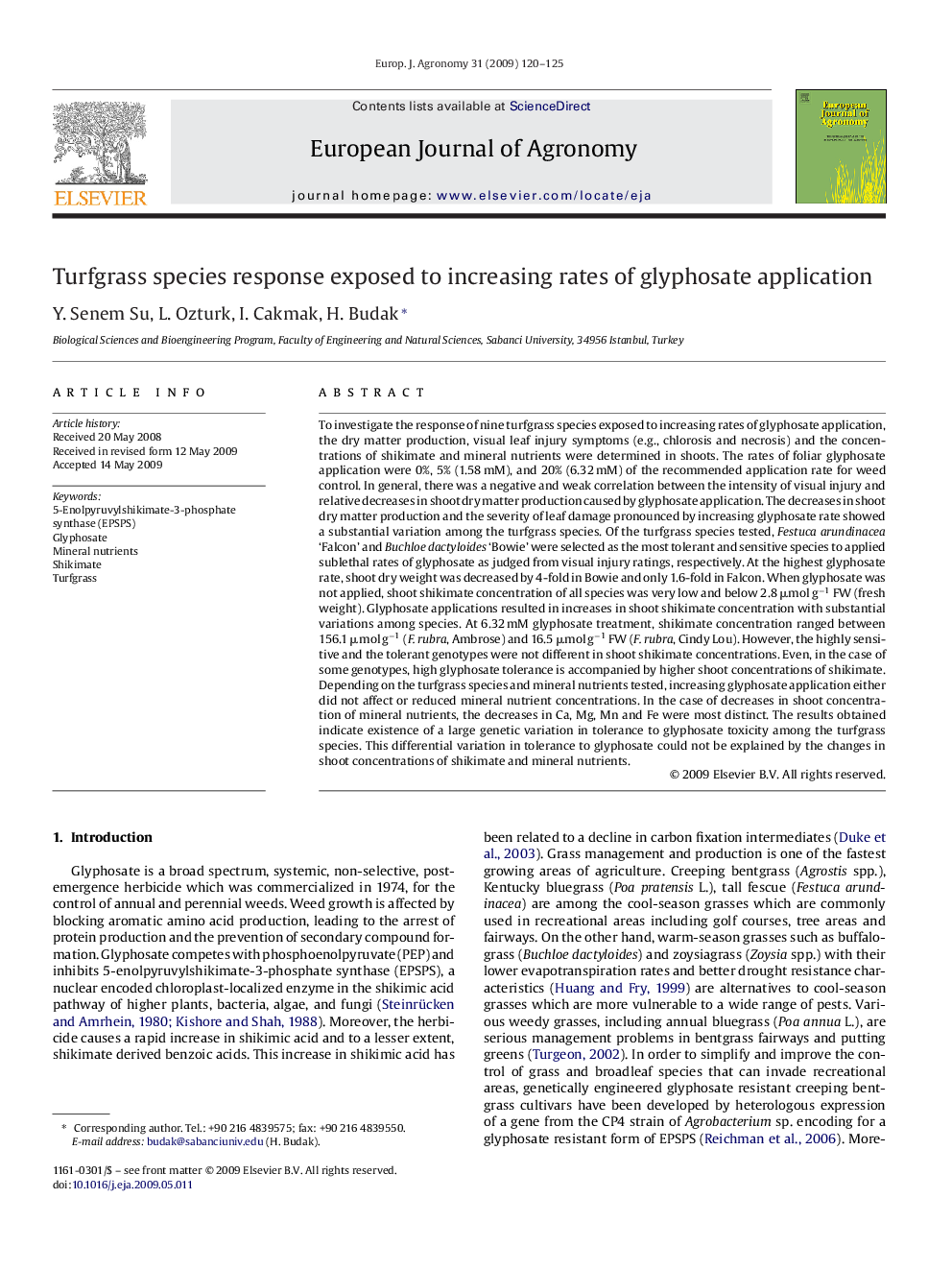| کد مقاله | کد نشریه | سال انتشار | مقاله انگلیسی | نسخه تمام متن |
|---|---|---|---|---|
| 4509386 | 1624508 | 2009 | 6 صفحه PDF | دانلود رایگان |

To investigate the response of nine turfgrass species exposed to increasing rates of glyphosate application, the dry matter production, visual leaf injury symptoms (e.g., chlorosis and necrosis) and the concentrations of shikimate and mineral nutrients were determined in shoots. The rates of foliar glyphosate application were 0%, 5% (1.58 mM), and 20% (6.32 mM) of the recommended application rate for weed control. In general, there was a negative and weak correlation between the intensity of visual injury and relative decreases in shoot dry matter production caused by glyphosate application. The decreases in shoot dry matter production and the severity of leaf damage pronounced by increasing glyphosate rate showed a substantial variation among the turfgrass species. Of the turfgrass species tested, Festuca arundinacea ‘Falcon’ and Buchloe dactyloides ‘Bowie’ were selected as the most tolerant and sensitive species to applied sublethal rates of glyphosate as judged from visual injury ratings, respectively. At the highest glyphosate rate, shoot dry weight was decreased by 4-fold in Bowie and only 1.6-fold in Falcon. When glyphosate was not applied, shoot shikimate concentration of all species was very low and below 2.8 μmol g−1 FW (fresh weight). Glyphosate applications resulted in increases in shoot shikimate concentration with substantial variations among species. At 6.32 mM glyphosate treatment, shikimate concentration ranged between 156.1 μmol g−1 (F. rubra, Ambrose) and 16.5 μmol g−1 FW (F. rubra, Cindy Lou). However, the highly sensitive and the tolerant genotypes were not different in shoot shikimate concentrations. Even, in the case of some genotypes, high glyphosate tolerance is accompanied by higher shoot concentrations of shikimate. Depending on the turfgrass species and mineral nutrients tested, increasing glyphosate application either did not affect or reduced mineral nutrient concentrations. In the case of decreases in shoot concentration of mineral nutrients, the decreases in Ca, Mg, Mn and Fe were most distinct. The results obtained indicate existence of a large genetic variation in tolerance to glyphosate toxicity among the turfgrass species. This differential variation in tolerance to glyphosate could not be explained by the changes in shoot concentrations of shikimate and mineral nutrients.
Journal: European Journal of Agronomy - Volume 31, Issue 3, October 2009, Pages 120–125